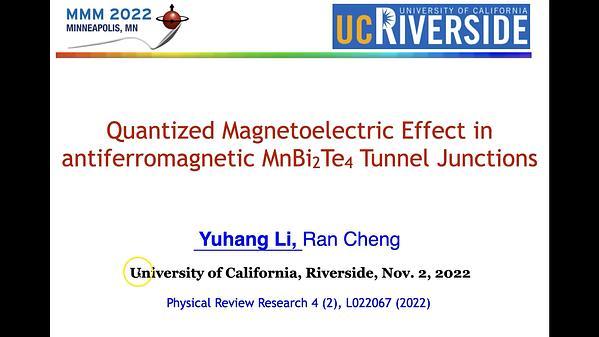Would you like to see your presentation here, made available to a global audience of researchers?
Add your own presentation or have us affordably record your next conference.
The push into three dimensions in nanomagnetic systems is a growing theme in basic nanomagnetism research and potential spintronics devices. In two dimensions,
magnetic Skyrmions are an established platform to explore the physics of real-space topological spin textures. In three dimensions, the analogous spin texture is the recently observed magnetic Hopfion 1. A Hopfion is a toroidal spin texture equivalent to a Skyrmion string twisted and closed into a torus (fig. 1). 3D magnetic systems are also predicted to host additional novel spin textures including Skyrmion tubes, chiral bobbers, and torons.
These 3D spin textures, which have so far only been observed statically, now hold promise for dynamical studies. Investigating transitions between these novel 3D spin textures under
applied magnetic fields or currents is within reach with experimental studies with time-resolved x-ray microscopy and scattering techniques. (fig. 2). I will present numerical calculations
investigating how the dynamics of Hopfions and related 3D spin textures couple to their topology 2. This work has implications for experimental design and 3D spintronic device
engineering. This work was funded by the US DOE, Office of Science, Basic Energy Sciences under Contract No. DE-AC02-05-CH11231.
References
1 N. Kent et al., “Creation and observation of Hopfions in magnetic multilayer systems,” Nature Communications, vol. 12, no. 1, p. 1562, 2021, doi: 10.1038/s41467-021-21846-5. 2 D. Raftrey and P. Fischer, “Field-Driven Dynamics of Magnetic Hopfions,” Physical Review Letters, vol. 127, no. 25, p. 257201, Dec. 2021, doi: 10.1103/PhysRevLett.127.257201.

(a) Magnetization color map of a Hopfion at the z=0 plane.
(b) Magnetization color map of Hopfion at the y=0 plane.
(c) Hopfion spin textures with linked magnetization isosurfaces. The Hopf invariant or linking number, Q, is the number of times the isosurfaces are linked.
(d) Detail of Hopfion vortex rings.
(e) Magnetization color map of a toron at the z=0 plane.
(f) Magnetization color map of toron at the y=0 plane.
(g) Toron spin textures with unlinked isosurfaces. A toron has Q=0.
(h) Detail of toron Bloch points (monopole antimonopole pair).

(a) Power Spectral Density response of a Hopfion to a field pulse under static applied external field.
(b) Magnetic excitation pulse applied in the x direction in the time domain. Pulsed field is the cardinal sign or sinc function.
(c) Fourier transform of the excitation pulse in the frequency domain. The sinc function creates a square wave with equal sampling frequency up to a maximum frequency of 15 GHz.
